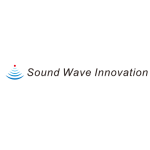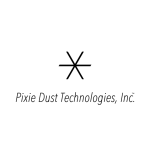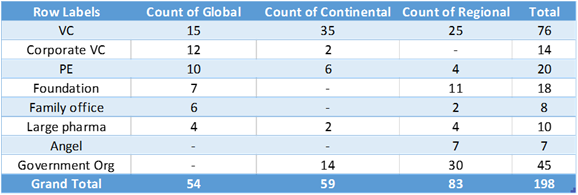Most companies dream about closing a licensing deal with big Pharma. But what do these deals really contain from a financial perspective and can any trends be found for potential big Pharma licensees in order to assist licensors in the deal making process? To gain insight in these aspects, we have analyzed the financial deal structures of more than 270 therapeutic licensing deals for 11 big Pharma companies since 2007 listed in the Biotechgate Licensing Deals database.
By Karin Bakker, May 2012*
Orphan diseases have become an attractive licensing target for big Pharma. In the last year both Pfizer and GlaxoSmithKline established a research collaboration on lysosomal storage disorders with Zacharon Pharmaceuticals respectively Angiochem. Potential deal sizes were valued at USD 210m for the Zacharon-Pfizer deal focusing on small molecule drug discovery targeting glycans and minimally USD 300m for the enzyme replacement collaboration between Angiochem and GlaxoSmithKline on EPiC enzymes crossing the blood brain barrier. The upfront payment of around USD 30m for the latter collaboration was comparable to the upfront payment of a worldwide licensing deal established between Amicus Therapeutics and GlaxoSmithKline in 2010 on a phase III chaperone product for Fabry disease. Protalix Biotherapeutics received USD 60m in upfront payments from Pfizer on an enzyme replacement therapy for Gaucher’s disease in the pre-filing phase. Both of the latter deals had a cost-sharing component.
Stem cell research is another area of interest for big Pharma with a variety of early stage deals established over the last 5 years. Cytori Therapeutics’ evaluation of the potential of adipose derived stem and regeneration cells for liver disorders is supported by a USD 10m equity investment from Astellas Pharma in exchange for a 2 years right of first refusal. While the Epistem-Novartis stem cell target and drug discovery collaboration obtained a comparable upfront payment to the preclinical inflammatory bowel disease product license between Athersys and Pfizer, potential milestones for the latter totaled USD 105m compared to USD 45m per product for Epistem. The monoclonal antibody, protein and small molecule approach against stem cells in oncology used by Oncomed Pharmaceuticals in their research collaborations with GlaxoSmithKline and Bayer Schering Pharma seems much more profitable. Milestones for the collaboration with GlaxoSmithKline could total up to USD 1.4 billion for 4 monoclonal antibodies.
Licensing deals between big Pharma companies often contain a cost-sharing component. BristolMyers Squibb and Pfizer negotiated a 40:60 cost-sharing arrangement for development of BristolMyers’ phase III direct Factor Xa inhibitor. Under a 2005 US-licensing deal between Bayer and Johnson & Johnson on a similar product in phase II development also global cost-sharing was negotiated. The latter deal was valued at USD 290m, while BristolMyers Squibb will obtain up to USD 1 billion in upfront and milestone payments for their phase III product from Pfizer.
Not in all cases a licensing deal with big Pharma seems the most profitable for a licensor. Milestone payments for NeurOp’s NR2B subunit specific NMDA-antagonist research in depression and neuropathic pain totaled USD 74m from BristolMyers Squibb. Concert Pharmaceuticals’ licensing deal for their preclinical dual NMDA-antagonist and sigma-1 modulator for neurological and psychiatric disorders with non-big Pharma Avanir Pharmaceuticals seems more profitable. Concert will obtain milestones of up to USD 200m from Avanir.
Profit sharing percentages between GlaxoSmithKline and their licensors can differ upon different countries and indications. Deal structures for new research alliances between GlaxoSmithKline and existing licensors were found to be similar. Five Prime Therapeutics and GlaxoSmithKline established two research alliances in 2010 and 2012 on musculoskeletal and respiratory disorders. Both deals contained an upfront payment, milestones, research funding over 3-4 years, equity and tiered royalties. The majority of the research alliances of GlaxoSmithKline contain double digit royalties.
For Novartis profit sharing occurred in only around 10% of all licensing deals found in the Biotechgate Licensing deal database. Milestone payments for two phase II oncology products from different compound classes back in 2007 both totaled around USD 700m for licensors Antisoma and Transgene.
Milestone payments by Merck & Co. to its licensees for start of phase II clinical trials in oncology were shown to depend on the indication and varied between USD 2.5m and USD 15m. Milestone payments even differed for two infectious diseases drug discovery alliances established with Ranbaxy Laboratories (now Daiichi Sankyo) and Orchid Chemicals and Pharmaceuticals in 2008. With both companies responsible for multiple-target drug discovery and development through phase IIa clinical trials, milestone payments to Orchid were USD 100m in total, while Ranbaxy obtained milestone payments of USD 100m per target.
More financial information on big Pharma deal making is available through both our new big Pharma benchmark reports and our online Biotechgate Licensing Deal database. If you are interested to learn more about our benchmark reports or our online Biotechgate Licensing Deal database, please contact our Business Development Executive Alan Jones directly:
a.jones@biotechgate.com
Direct phone: + 41 (44) 500 38 48
www.biotechgate.com
The Biotechgate Licensing Deals database contains more than 1400 therapeutic deals over a 16 year period from small company licensors to big Pharma licensees. The database only contains deals on therapeutics with at least one financial component. Each deal entry is categorized and searchable by licensor, licensee, indication, compound details, compound name, development stage (research – filed for regulatory approval), licensed territory, potential deal size, upfront, total milestone payments, regulatory milestone payments, sales milestones payments, royalties on sales, research funding, equity and by year of deal establishment.
As of May 2012 targeted deal benchmark reports are offered, providing vital information on deals for selected big Pharma licensees, indications, product development phases and/or compound classes.
More information is available at www.biotechgate.com/deals
*Karin Bakker is the managing director of PharmaPlus Consultancy, a specialist in licensing
related services in the Life Sciences field. PharmaPlus has monitored and collected
Licensing Deal information since 1996, which are available online in Biotechgate.






